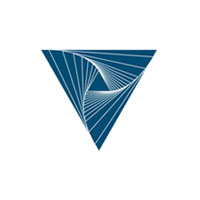Research
The main research interests of Joachim Saur and his group lie in the understanding of planets and their space environments. The research goals are achieved through a combination of high-performance computing and analysis of data obtained from spacecraft and telescopes. The space environment around the planets and their moons is often diagnostic of the interior of these bodies. Of particular relevance is the question if liquid water exists under the icy surface of some of the moons in the solar system because water is considered to be one of the essential ingredients for life as we know it. In order to interpret telescope and spacecraft observations of the space environment around the moons and planets, sophisticated numerical models are necessary. These numerical models describe the highly non-linear flow of plasma around the bodies including various spatial scales and the feedback between their interior and exterior. The research group of Joachim Saur applies, develops, and runs such plasma models on supercomputers. More research details can be found on https://geomet.uni-koeln.de/forschung/ag-saur. Joachim Saur is also the speaker of the Competence Area: Quantitative Modeling of Complex Systems, which fosters interdisciplinary work within the Excellence Initiative of the University of Cologne, see www.complexsystems.uni-koeln.de.
Selected publications
- E. Chané, J. Saur, R. Keppens, and S. Poedts, How is the Jovian Main Auroral Emis- sion Affected by the Solar Wind?, J. Geophys. Res., 122, 1960-1978, doi:10.1002/2016JA023318, 2017
- Hartkorn O., J. Saur, D.F. Strobel, Structure and Density of Callisto’s Atmosphere from a Fluid-Kinetic Model of Its Ionosphere and Comparison with Hubble Space Telescope and Galileo Observations, Icarus, 282, 237-259, DOI: 10.1016/j.icarus.2016.09.020, 2017
- Blöcker, A., J. Saur, L. Roth, Europa’s Plasma Interaction with an Inhomogeneous At- mosphere: Development of Alfvén Winglets within the Alfvén wings, J. Geophys. Res., 121, 9794-9829, DOI: 10.1002/2016JA022479, 2016
- Saur J., et al., The Search for a Subsurface Ocean in Ganymede with Hubble Space Telescope Observations of its Auroral Ovals, J. Geophys. Res., 120, 1715-1737, 2015
- Roth L.∗, J. Saur∗, et al, Transient water vapor at Europa’s south pole, Science, 343(6167), 171-174, 2014
- Duling, S., J. Saur, Wicht J., Consistent boundary conditions at nonconducting surfaces of planetary bodies: Applications in a new Ganymede MHD model, J. Geophys. Res., 119, 4412-4440, 2014
- Saur J., et al., Evidence for temporal variability of Enceladus’ gas jets: Modeling of Cassini observations, Geophys. Res. Lett., 35, L20105, 2008
- Saur J. et al., Anti-planetward auoral electron beams at Saturn, Nature, 439, 699-702, 2006
- Dougherty M.K., K.K. Khurana, F.M. Neubauer, C.T. Russell, J. Saur, J.S. Leisner, and M.E. Burton, Identification of a dynamic atmosphere at Enceladus with the Cassini magnetometer, Science, 311, 1406, 2006
- von Papen M., H. Dafsari, E. Florin, F. Gerrick, L. Timmermann, J. Saur, Phase- coherence classification: a new wavelet-based method to separate local field potentials into local (in)coherent and volume-conducted components, J. Neuroscience Methods, 291C, 198-212,DOI: 10.1016/j.jneumeth.2017.08.021, 2017
